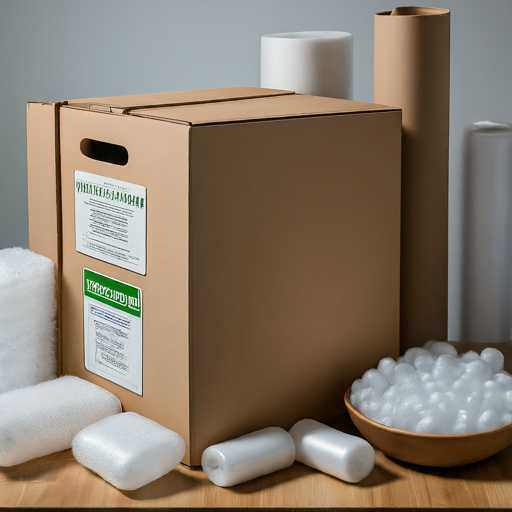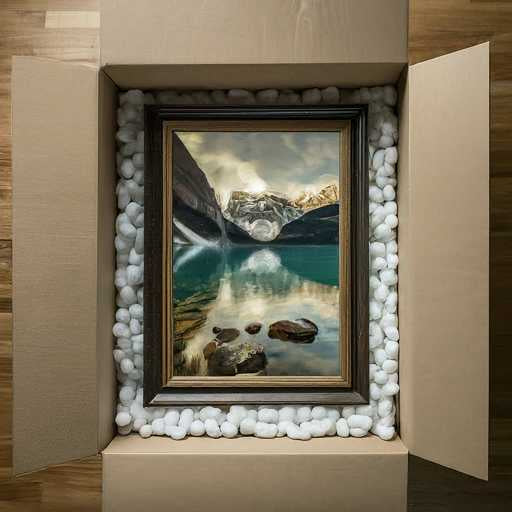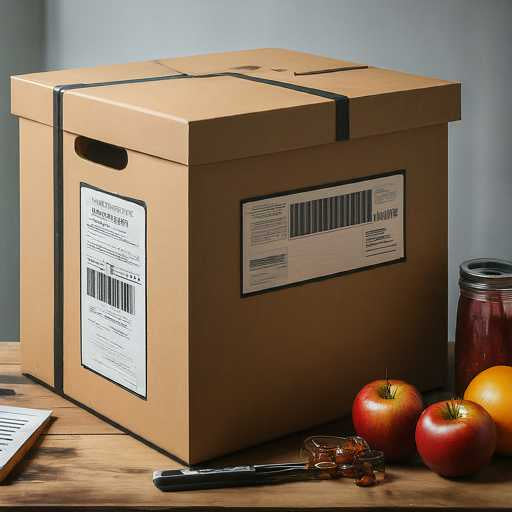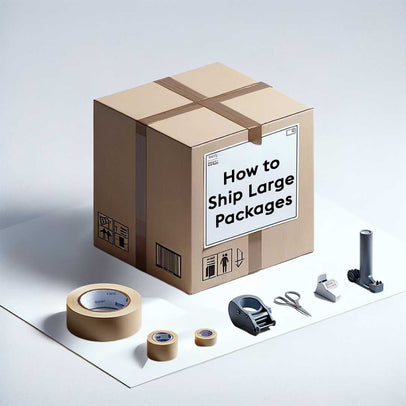Packaging 101: The Complete Guide
- Packaging 101
- Types of Packaging
- Aseptic Packaging
- Blister Packaging
- Biodegradable Packaging
- Bulk Packaging
- Carbon Neutral Packaging
- Circular Packaging
- Clamshell Packaging
- Compostable Packaging
- Cornstarch Packaging
- Corrugated Packaging
- Discreet Packaging
- Ecommerce Packaging
- Flexible Packaging
- Frustration Free Packaging
- Retail Packaging
- Secondary Packaging
- Smart Packaging
- Sustainable Packaging
- What is a PR Package?
- What is a Poly Mailer?
- Packaging Design Ideas
- AI Packaging Design
- Bakery Packaging Ideas
- Bath Bomb Packaging Ideas
- Bath Salt Packaging Ideas
- Body Butter Packaging Ideas
- Body Oil Packaging Ideas
- Body Scrub Packaging Ideas
- Brownie Packaging Ideas
- Cake Packaging Ideas
- Cake Pop Packaging Ideas
- Candle Packaging Ideas
- Candy Packaging Ideas
- Canva Packaging Design
- Chocolate Packaging Ideas
- Cinnamon Roll Packaging Ideas
- Clothing Packaging Ideas
- Coaster Packaging Ideas
- Coffee Bag Design Ideas
- Cookie Packaging Ideas
- Cosmetics Packaging Design
- Cotton Candy Packaging Ideas
- Cupcake Packaging Ideas
- DIY Packaging Ideas
- Dog Treat Packaging Ideas
- Food Packaging Ideas
- Empanada Packaging Ideas
- Etsy Packaging Ideas
- French Fries Packaging Ideas
- Frozen Food Packaging Ideas
- Hair Extension Packaging Ideas
- Handbag Packaging Ideas
- Jewelry Packaging Ideas
- Keychain Packaging Ideas
- Lash Packaging Ideas
- Lip Gloss Packaging Ideas
- Macaron Packaging Ideas
- Minimalist Packaging Ideas
- Mug Packaging Ideas
- New Employee Welcome Kit Ideas
- Packaging Colors
- Packaging Inserts Ideas
- Packaging Logo Design
- Packaging Typography
- Perfume Box Design Ideas
- Pizza Box Design Ideas
- Popcorn Packaging Ideas
- Scarf Packaging Ideas
- Skincare Packaging Design Ideas
- Soap Packaging Ideas
- Sock Packaging Ideas
- Sticker Packaging Ideas
- Sunglass Packaging Ideas
- Sustainable Packaging Ideas
- Tea Packaging Ideas
- Wax Melt Packaging Ideas
- Weed Packaging Ideas
- T-Shirt Packaging Ideas
- Wine Packaging Design Ideas
- What is a Packaging Engineer?
- Types of Packaging Materials
- Chipboard vs Cardboard
- Compostable Packaging Materials
- Alternatives to Plastic Packaging
- Edible Packaging Materials
- Food Packaging Materials
- Are Poly Mailers Recyclable?
- How to Recycle Cardboard Boxes
- How to Recycle Packaging Materials
- Medical Device Packaging Materials
- Mono Material Packaging
- Pharmaceutical Packaging Materials
- Plastic Food Packaging
- Protective Packaging Materials
- Reusing Packaging Materials
- Types of Packaging Foam
- Void Fill Packaging
- What is Chipboard?
- What is Kraft Paper?
- Offset vs Digital Printing
- RGB vs CMYK Printing
- Screen Printing vs Digital Printing
- Screen Printing vs Sublimation
- What is a Dieline in Packaging?
- What is Die Cutting?
- What is Digital Printing?
- What is Flexographic Printing?
- What is Glassine Paper?
- What is Offset Printing?
- What is Spot UV Printing?
- Why is 300 DPI Good for Printing?
- How to Estimate Shipping Costs
- How to Pack Glass for Shipping
- How to Mail a Bubble Mailer
- How to Make a Shipping Label
- How To Measure Box Dimensions and Sizes
- How to Ship Alcohol
- How to Ship Artwork
- How to Ship Books
- How to Ship a Cake
- How to Ship Candles
- How to Ship Clothes
- How to Ship Cookies
- How to Ship Food
- How to Ship a Laptop
- How to Ship a PC
- How to Ship Plants
- How to Ship Shoes
- How to Ship Vinyl Records
- Packaging Symbols
- Shipping Large Items
- What is a Delivery Exception?
- What is Shipping Insurance?

Discover Phillip Akhzar’s journey, the Founder and CEO of Arka, bringing 16 years of expertise in packaging and supply chain logistics. Read more on Arka.
Understanding the Challenges of Shipping Large Packages
Shipping large items poses a complex logistical puzzle, demanding thoughtful consideration; whether you're a business dispatching products or an individual moving, grasping the nuances of how to ship large items is crucial.
This discourse will unravel the primary challenges of shipping large packages and offer insights into overcoming them.
• Fragility and Sensitivity: A major issue of shipping large items is the chance of them breaking; unlike small packets, larger ones are easy to spoil while in transit. This demands a proper consideration of the means and resources used in packaging as well as considering the extra protection. The application of protective packaging materials like bubble wrap, and pads and the use of custom crates can cause the required padding that will safeguard the goods from the roughness of the shipping process.

• Size and Weight Limitations: Shipping large boxes usually come with size and weight limitations provided by the carriers; package dimension limits and weight can lead to additional charges or even provisions in case they are not adhered to. Navigating safely through this challenge involves taking precise measurements and weighing large items before choosing the shipping method. This will prevent unnecessary costs in terms of compliance with carrier regulations and ensure that no last-minute surprises arise during the equipment movement.
• Cost Factors: The cost of shipping large items is a main factor to consider, with the expenses directly dictated by the size and weight of the packages; carriers use this info as an influence for their charges, which can hike up the costs. To minimize the cost, research various shipping options and even rate comparisons from one carrier to another. Combining more than one item in a single shipment often is financially wise. Understanding the pricing and using discounts available gives a choice of informed decision-making to ensure the costs of shipment are kept in check.

How to Ship Large Items: Materials, Techniques, Labeling
Shipping large items may initially appear formidable, but employing suitable packaging materials, methods and labeling ensures a seamless and secure delivery. Whether dispatching bulky items or delicate belongings, adhering to these instructions facilitates proficient process navigation.
Let's explore some essential steps on how to ship large items successfully, covering everything from packaging materials to labeling and documentation.

Choose the Right Packaging Materials
If you wonder how to ship large packages, selecting the appropriate packaging materials is crucial. Explore diverse choices like bubble wrap, foam and other protective substances to shield your items during transit. Robust boxes are imperative, furnishing a resilient outer layer of protection. This safeguards against external impacts and averts package collapse under its weight.
Environmental considerations should also guide your choices, favoring sustainable packaging options. Embracing eco-friendly materials diminishes your carbon footprint and aligns with the escalating demand for environmentally conscious shipping practices.

Implement Proper Cushioning Techniques
Effective cushioning is a prerequisite to preventing substantial items' harm. Employ layering and padding methodologies to establish a protective barricade within the box. This mitigates the impact of shocks and vibrations during transportation, ensuring the items reach their destination unscathed.
Preventing movement within the packaging assumes equal significance. Securely immobilize your items to minimize internal shifts during transit, achieved through strategic placement of padding or the use of dividers to compartmentalize the box's interior.

Seal and Secure the Package
The ultimate line of defense against potential damage lies in sealing and fortifying your package. Employ robust custom packing tape to seal the box, emphasizing seams and edges securely. Contemplate reinforcing the package with additional tape layers to bolster its strength for weighty items.
For particularly weighty items, enhance the box's structural integrity by affixing extra layers of cardboard to vulnerable areas.

Do Labeling and Documentation
Prudent labeling is a critical facet of shipping large boxes. Clearly and accurately mark the package with the recipient's address, ensuring visibility and legibility of all details. Include your return address to expedite the return process if required.
Abide by safety measures in shipping, adhering to OSHA guidelines for freight. Conspicuously denote packages containing fragile items, hazardous materials or anything demanding special handling. Furnishing precise documentation ensures compliance with shipping regulations, averting delays or complications in the arrival of your substantial items at their destination.

Shipping Large Packages: 4 Best Courier Options
When shipping large items, selecting an apt courier becomes paramount. Be it a gift, furniture or any other substantial item, a dependable service capable of managing both size and weight is essential. Let's delve into the top four courier choices, considering factors such as costs, weight limits, and overall efficiency.
United States Postal Service (USPS)
If you aim to find a cost-efficient option for shipping large packages, USPS stands out as a reliable selection. Offering various services like Priority Mail and Priority Mail Express, USPS provides competitive rates tailored to diverse package sizes, particularly suited for domestic shipments.
Steps to ship large items with USPS:
• Visit your local post office or utilize online USPS shipping tools.
• Select the appropriate service based on your package size and desired delivery speed.
• Securely pack your large item, adhering to USPS guidelines.
• Print and affix the shipping label, then drop off your package or schedule a pickup.
FedEx
Recognized for its comprehensive shipping solutions, FedEx proves to be an excellent choice for those contemplating how to ship a large package. With services like FedEx Ground, Home Delivery, and Freight catering to large and heavy items, the slightly higher cost is justified by added convenience and reliability.
Steps to ship large items with FedEx:
• Create a FedEx account online or visit a local FedEx location.
• Choose the desired service based on your package dimensions and delivery requirements.
• Securely package your item, following FedEx guidelines.
• Generate and attach the shipping label, then drop off your package at a FedEx location.

United Parcel Service (UPS)
Renowned for its global reach and efficient logistics, UPS emerges as an excellent option for shipping large packages. UPS Ground and UPS Freight services accommodate various oversized items, albeit at a somewhat higher cost. The reliability and extensive network, however, make UPS invaluable for both domestic and international large-item shipments.
Steps to ship large items with UPS:
• Sign up for a UPS account online or visit a UPS location.
• Choose the appropriate service based on your package size and delivery preferences.
• Securely pack your large item, following UPS guidelines.
• Print and attach the shipping label, then drop off your package at a UPS location.

DHL
For those pondering how to ship big items internationally, DHL emerges as a trusted courier service with a global network and efficient delivery services. DHL Express, in particular, handles oversized packages with care and offers competitive rates for international shipments.
Steps to ship large items with DHL:
• Visit the DHL website or contact a local DHL service point.
• Select DHL Express for the international shipping of large items.
• Pack your item securely, adhering to DHL packaging guidelines.
• Generate and attach the DHL shipping label, then drop off your package at a DHL service point.
International Shipping of Large Items
The demand for shipping large items has risen in the global market, and organizations and individuals would be willing to get their hands on a reliable and efficient means of shipping bulky items across borders. Doing so, however, requires more than just locating the correct carrier; it necessitates a broad understanding of customs regulations, shipping restrictions, import duties, and taxes further complicated by their intricacies.
Customs Regulations: The exacting focus on customs regulations is required when shipping large items internationally. These rules vary from one country to another and so the shippers need to refer to the guidelines applicable to the destination. Good documentation comprising invoices together with permits is critical in ensuring that your large package passes through customs hitch-free.
Shipping Restrictions: Proper understanding revealed from knowledge of shipping restrictions cannot be overemphasized when it comes to the shipment of large items that are big or oversized. Restrictions to some materials or sizes might differ with different nations, and it is important to confirm the limits at the start when initiating the process of shipping. Understanding such limits and regulations will avoid inconveniences and also guarantee that large substances reach their destinations without trouble.
Import Duties and Taxes: Import duties and taxes are a component of international shipping. The shippers should know the financial implications of carrying large packages from one country to another. Calculating these before allows better budgeting and avoiding surprises upon arrival. Getting engaged with a customs broker or making use of online tools can assist in determining the likely duties and taxes and making a more pronounced decision.

Final Thoughts
Perfecting the art of packaging is crucial for shipping large items; ensuring the safe delivery of oversized goods depends on picking strong and right-sized packaging to protect items from potential harm during transit. By using these methods, shippers can ensure their large items get to their destination without any issues, meeting the requirements of a growing global market.
For businesses looking for simple packaging solutions, Arka is a dependable ally. We provide customized services to fulfill various packaging needs and improve the shipping process.
Let’s create your perfect custom packaging; whether you need custom shipping boxes or mailer boxes, we can help create the most eye-catching packaging for your brand.

FAQs on Shipping Large Boxes
What should I do if my large item is delayed or damaged during shipping?
In the event of delay or damage, share with the shipping provider and they will take you through the procedure on how to fix it.
How can I reduce shipping costs for heavy and large items?
Consider shipping multiple items together, look for bulk discounts and compare rates from various carriers to get cost-effective options.
What technology is used in large-item shipping?
To ensure smooth and safe travel for oversized items, technologies such as tracking systems, GPS as well as logistics software are often employed.

